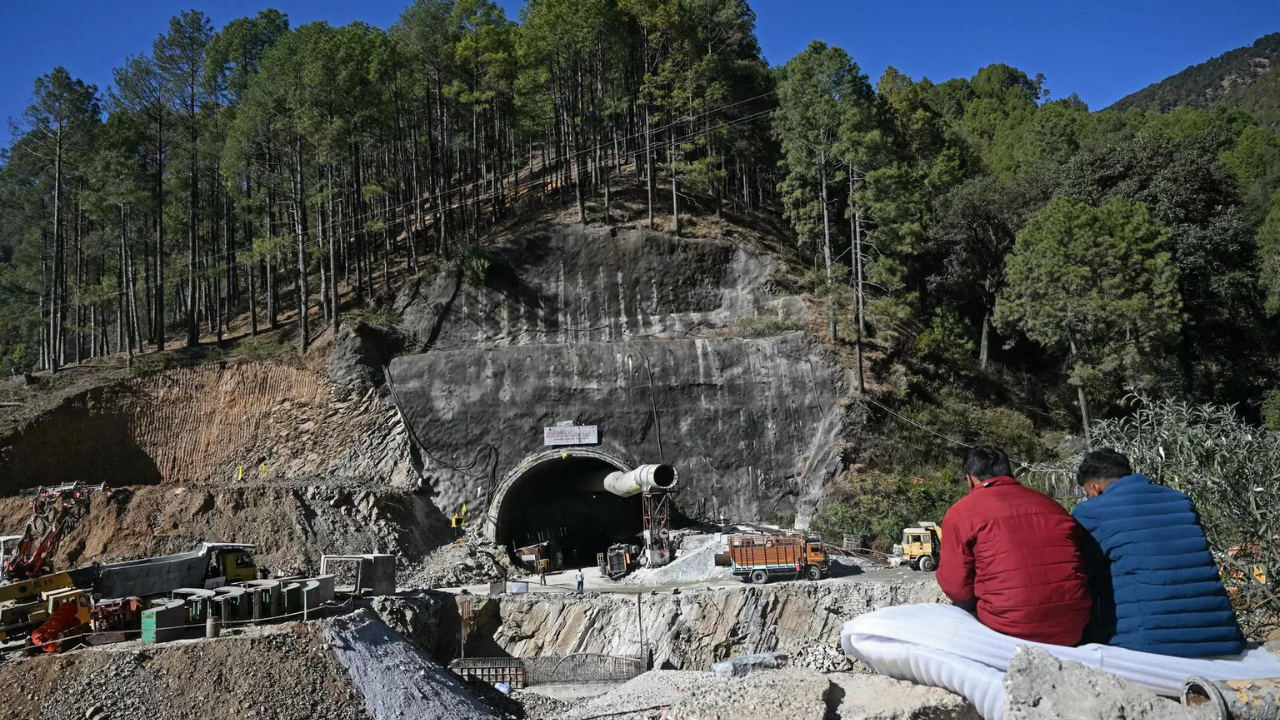DEHRADUN/LUCKNOW: Almost always, after their “dirty” work is done and they are ready to call it a day, no one remembers their name. There is seldom a “thank you”. On Tuesday evening, as they became the first ones to reach 41 labourers trapped in Uttarkashi’s Silkyara tunnelthey were called “angels from above”. Farishte.
The rag-tag team of ‘rat-hole’ miners who played perhaps one of the most important roles in the rescue of the workers in Uttarakhanddoing in hours what no machine could in several days, make for unlikely heroes.But now many – especially the men, who were inside the tunnel for 17 days, and their families – will remember their names for a long time.
“It was a very emotional moment,” said 27-year-old Nasir Khan, one of the ‘rat-hole’ miners involved in the rescue that had an entire nation glued to TV sets, hanging on to each word that came out in the newspapers. “All of us were on the verge of tears. The labourers hugged us when they saw us come for them. They said we were God-sent.”
Khan added: “We are also labourers like them, but never had I imagined I would be rescuing so many people. Who would’ve thought.” None perhaps.
It was a job like no other. The 12 men, who cleared the passage for the trapped group to eventually come out from, worked without a break for 26 hours. And with little at their disposal except their skills, fortitude and some basic tools.
A day after the successful evacuation of 41 workers following a 17-day effort, Arnold Dix, president, Geneva-based International Tunnelling and Underground Space Association, told TOI that “while both the auger machine and ‘rat-hole’ mining team played a pivotal role in rescuing the stranded men, ‘rat-hole’ mining proved to be the most effective approach in handling formidable mountains like the Himalayas”.
In the final stages of the rescue, Dix exchanged his construction helmet with one of the ‘rat-hole’ miners and carried it to the Baukhnaag temple set up outside the tunnel entrance “as a symbol of good luck”. He said, “I just wanted to convey my gratitude to them.”
Dix, the world’s leading expert on underground tunnelling and issues associated with it from an operational safety perspective, arrived in Uttarkashi on November 20 and has been stationed at the site since then.
Praising the work done by engineers and rescue personnel in safely bringing out trapped labourers, Dix told TOI, “I’ve never witnessed an incident where all trapped individuals were evacuated unharmed, especially considering the prolonged duration and challenging geographical conditions. This incident stands as an example of human willpower.”
Overwhelmed by the support for rescue teams, Dix said, “Whether it was the unwavering determination of rescue teams, selfless support of volunteers or prayers of local villagers for strangers, such occurrences are quite extraordinary.”
Dix is now planning to return to Australia.
The rag-tag team of ‘rat-hole’ miners who played perhaps one of the most important roles in the rescue of the workers in Uttarakhanddoing in hours what no machine could in several days, make for unlikely heroes.But now many – especially the men, who were inside the tunnel for 17 days, and their families – will remember their names for a long time.
“It was a very emotional moment,” said 27-year-old Nasir Khan, one of the ‘rat-hole’ miners involved in the rescue that had an entire nation glued to TV sets, hanging on to each word that came out in the newspapers. “All of us were on the verge of tears. The labourers hugged us when they saw us come for them. They said we were God-sent.”
Khan added: “We are also labourers like them, but never had I imagined I would be rescuing so many people. Who would’ve thought.” None perhaps.
It was a job like no other. The 12 men, who cleared the passage for the trapped group to eventually come out from, worked without a break for 26 hours. And with little at their disposal except their skills, fortitude and some basic tools.
A day after the successful evacuation of 41 workers following a 17-day effort, Arnold Dix, president, Geneva-based International Tunnelling and Underground Space Association, told TOI that “while both the auger machine and ‘rat-hole’ mining team played a pivotal role in rescuing the stranded men, ‘rat-hole’ mining proved to be the most effective approach in handling formidable mountains like the Himalayas”.
In the final stages of the rescue, Dix exchanged his construction helmet with one of the ‘rat-hole’ miners and carried it to the Baukhnaag temple set up outside the tunnel entrance “as a symbol of good luck”. He said, “I just wanted to convey my gratitude to them.”
Dix, the world’s leading expert on underground tunnelling and issues associated with it from an operational safety perspective, arrived in Uttarkashi on November 20 and has been stationed at the site since then.
Praising the work done by engineers and rescue personnel in safely bringing out trapped labourers, Dix told TOI, “I’ve never witnessed an incident where all trapped individuals were evacuated unharmed, especially considering the prolonged duration and challenging geographical conditions. This incident stands as an example of human willpower.”
Overwhelmed by the support for rescue teams, Dix said, “Whether it was the unwavering determination of rescue teams, selfless support of volunteers or prayers of local villagers for strangers, such occurrences are quite extraordinary.”
Dix is now planning to return to Australia.






